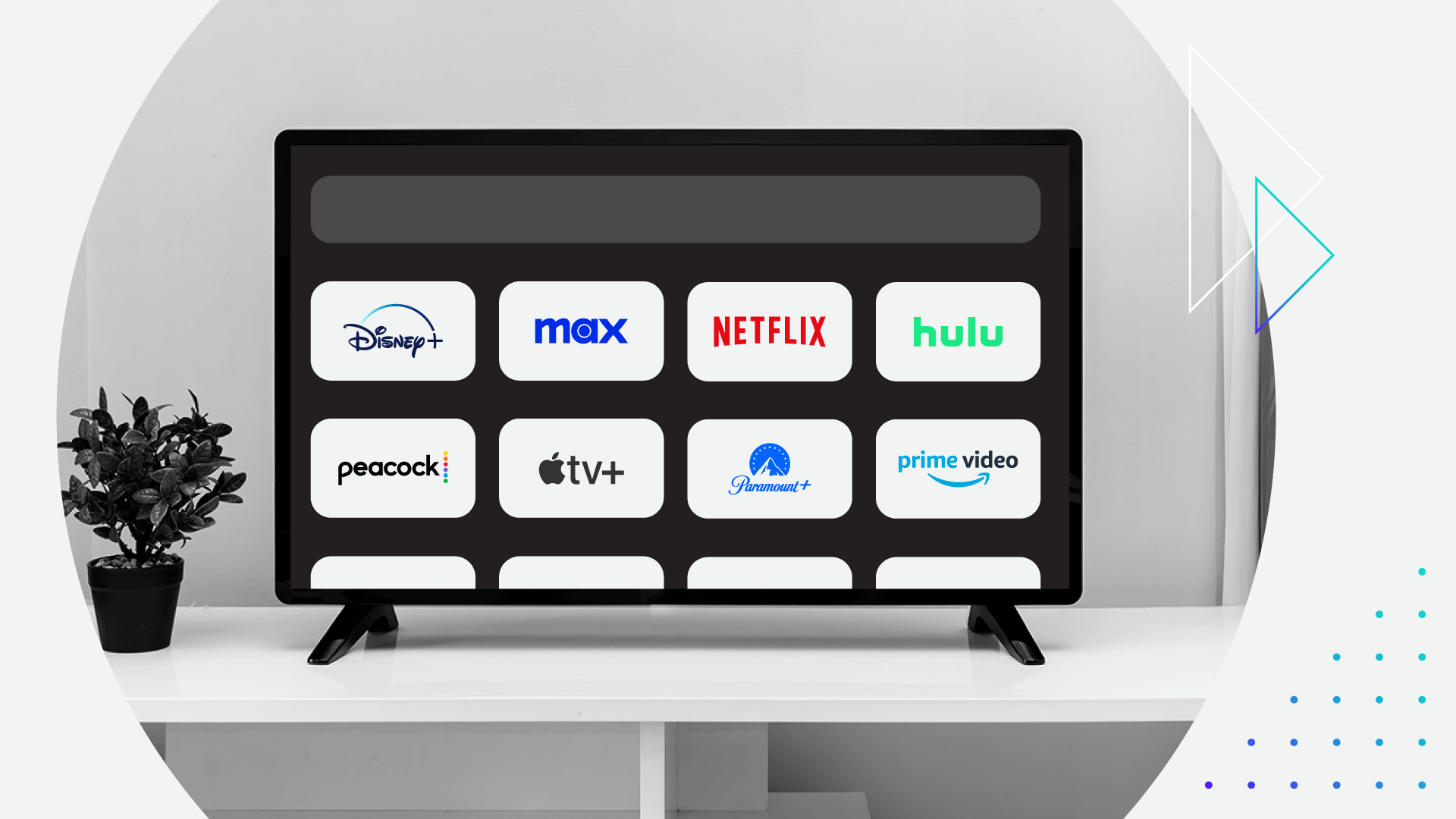Why Subtitle Use Is Deceptively High Among Young Viewers, and Why Streamers Need to React

Key Takeaways
Gen Z adults and millennials report using subtitles or closed captions for movies and TV shows at much higher rates than Gen Xers and baby boomers.
But the older cohorts’ use of subtitles should actually be much higher since hearing deteriorates with age, suggesting that solvable problems like accessibility and quality concerns are acting as deterrents.
An underserved need among older generations for on-screen text justifies further investment in the product feature by streaming platforms, especially as Morning Consult data shows that subpar subtitles can cut video streaming sessions short.
For the latest entertainment industry news and analysis, sign up for our entertainment briefing.
The discourse around subtitle use has reached a zenith, with research showing that subtitles are disproportionately used by young consumers amid an increasing number of non-English language originals taking off. These discussions are pertinent to video streaming platforms, pointing to ways they may be able to win over more Gen Zers and millennials.
But focusing exclusively on subtitle use among younger consumers may lead to companies incorrectly dismissing it as a fleeting trend driven by the TikTok generation.
In fact, new Morning Consult data suggests streamers are already missing out on catering to the subtitle needs of older consumers. Although hearing tends to deteriorate with age, Gen Z adults and millennials are significantly more likely than their older counterparts to use and be satisfied with subtitles. It’s possible that older consumers don’t find turning subtitles on to be straightforward, so they resort to simply raising the volume when served muddled dialogue.
This should encourage platforms to invest in enhancing their subtitle quality and customization features — improvements that can be meaningful differentiators.
Gen Zers and millennials are using more than just subtitles to aid their understanding of streaming content
It’s true that young people like subtitles: The shares of Gen Z adults (61%) and millennials (58%) saying they generally use them when watching TV shows or movies are much higher than the equivalent shares of Gen Xers (30%) and baby boomers (27%). But something not often mentioned is that headphone and speaker usage is also higher among younger generations.
Gen Zers and Millennials Use Many Tools to Boost Their Understanding of Video Content
In other words, Gen Zers and millennials don’t have a singular focus on using visual aids (subtitles and closed captions) to enhance their entertainment experiences. Instead, notable shares use other tools, too.
This is likely due to younger viewers’ higher usage of media overall compared with older generations: A consumer using many video streamers will need more tools to help enhance their understanding of dialogue than someone who uses fewer. Natural sound level and level and crispness are far from standardized across platforms.
Specific demographics at scale: Surveying thousands of consumers around the world every day powers our ability to examine and analyze perceptions and habits of more specific demographics at scale, like those featured here.
Why it matters: Leaders need a better understanding of their audiences when making key decisions. Our comprehensive approach to understanding audience profiles complements the “who” of demographics and the “what” of behavioral data with critical insights and analysis on the “why.”
Content trends play a role as well, given younger generations’ penchant for non-English content. While 38% of Gen Z adults and 45% of millennials said they have a favorable opinion of foreign-language films and TV shows, those figures were much lower for Gen Xers (25%) and baby boomers (18%).
Older consumers’ subtitle use is lower than it should be due to accessibility, quality concerns
Meanwhile, lower subtitle use among older consumers is likely due to accessibility issues. Roku’s Vice President of Viewer Product Preston Smalley previously attributed lower use of subtitles among seniors to “technical hurdles.” The process of enabling subtitles is slightly different on every platform — and older streaming devices may even require unintuitively holding down a button on an Apple TV remote — which is likely deterring older consumers.
Perceived quality of subtitles is probably at play, too. Older consumers are less likely to be satisfied with video streaming platforms’ subtitles than younger ones — unsurprising given the general lack of customization options across platforms. Our data suggests that the inability to control things like the size and speed of on-screen text is especially frustrating to older consumers.
Older Consumers Are Less Likely to Be Satisfied With Subtitle Options
These gripes could be deterring Gen Xers and baby boomers from using subtitles when viewing new content, so arguments that older audiences are inherently disinterested in subtitles seem misguided.
People use subtitles because they’re easily distracted, not hard of hearing
Bolstering subtitles could increase viewer engagement: By far the most popular reason subtitle users prefer on-screen text is to stay focused on what’s playing, rather than to address sound issues or a language barrier. The same is true for subtitle users of all ages.
Subtitles Are Mostly Used as an Attention Aid Rather Than a Hearing One
This makes sense given that the temptation to “second screen” rises as social platforms build out their short-form video and shopping offerings. But streamers clearly could do more to improve the quality of their subtitles: 32% of adults who use subtitles said they “sometimes” or “often” stop watching a video streaming service because they’re unsatisfied with the subtitles or closed captioning. This figure is similar among all adults (27%), signaling the broader positive impact that improved subtitles could have on content engagement.
It comes down to utility, rather than style, to make a difference. The shares of all adults who said it’s “very important” to be able to control the position, speed and size of subtitles are all much higher than for font style and color. Subtitle users similarly value being able to customize text position, speed and size over style and color. It’s fortunate that the customization preferences of these two groups broadly align: Considering the attitudes of both will help video streamers satisfy Gen Zers and millennials, and potentially also get some older consumers to start using subtitles.
Viewers Care Most About Controlling Subtitles’ Position
Enabling users to customize where subtitles appear is particularly worth tackling given how useful this feature would be, and how absent it is across streaming. While some auteurs might strongly object to subtitles that detract from their work’s deliberate cinematography, streamers can always selectively restrict this ability on certain titles to satisfy key relationships. Platforms like Netflix could even offer to create a custom subtitle set for a film created by a renowned director like Alfonso Cuarón or Steven Spielberg.
Subtitles won’t solve everything, but bad ones will become increasingly noticeable
While people will always base their subscription decisions on content library and price over subtitle quality, subtitles are still worth paying more attention to as global content increasingly fills up streamers’ catalogs. Plus, working with certain directors on custom subtitles could be a new way to show goodwill, which will become more necessary following the strikes that have no doubt dented the overall relationship between studios and talent.
There aren’t many novel ways for streamers to stand out from the competition, as companies have already dabbled in offbeat initiatives like mobile games, branded products and podcasts. As such, consumers will increasingly judge streamers by how well they nail the basics. It will be up to platforms to ensure that investment in trendy, nonessential side projects doesn’t detract from their ability to deliver a satisfying viewer experience.
Kevin Tran previously worked at Morning Consult as the senior media & entertainment analyst.


